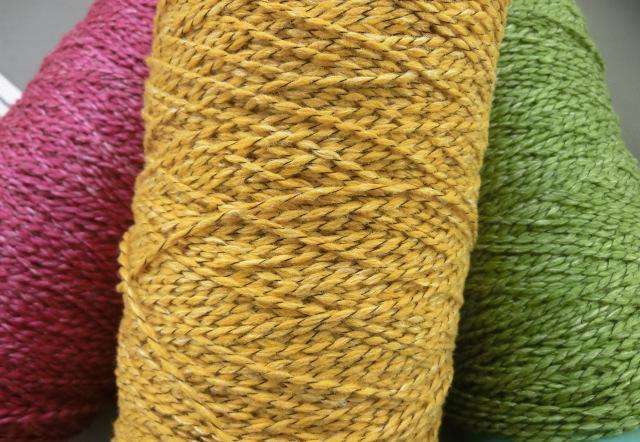The difference between fancy yarn and composite yarn
Composite yarn is only one type of fancy yarn. The scale of fancy yarn is relatively wide, including many types of yarns, abstractly speaking, in addition to traditional ring spinning, walking spinning, air spinning, etc. Other products made on machines such as hollow spindle twisting machines, small needle tube weaving machines, crochet machines, etc. (such as loop yarn, belly yarn, corrugated yarn, hollow ribbon yarn, bead yarn, feather yarn, half flannel, track yarn, lantern yarn, etc.) are called fancy yarn.

The difference between fancy yarn and composite yarn
Composite yarn is made by combining different types of yarns with lower twist, and the final product is generally thicker in count. Suitable for rough knitting or skilled weaving, with a rough style. There are also many products derived from it.
Fancy yarn, also known as special yarn, has great potential in material selection, color matching, pattern variation, and process parameter selection, which helps to increase the variety of fancy yarn itself.
Article source: Fancy Thread Manufacturer
-
05-27
The reason why fabrics containing spandex are prone to yellowing
Spandex is a commonly used fiber variety in our daily lives, characterized by good elasticity, low fineness, high elastic modulus (cracking elongation can reach 400-800), and low specific gravity. Spa
-
04-24
Colored non dyed nylon with synthetic fiber raw material
The current conventional fiber coloring mostly uses yarn dyeing method, which has long process, high loss, high cost, and the product has color difference and low color wash fastness. Yarn is prone to
-
03-26
What are the characteristics of non dyed spandex?
Non dyed spandex has also been widely used in recent years. Non dyed spandex fiber can be blended with fibers such as nylon, polyester, acrylic, cotton, wool, etc., which can give fabrics excellent el
-
02-24
The influence of yarn structure on fabrics
The basic characteristics of yarn include its appearance and shape, twisting characteristics, fiber transfer and distribution characteristics in the yarn, as well as the surface fuzz and internal loos
